 Let us begin by investigating where music comes from.
Let us begin by investigating where music comes from.
We know that music predates the written word. Scientists believe that modern humans developed in Africa around 160,000 or so years ago. Around 50,000 years ago these humans began to disperse from Africa to all the corners of our planet.
Since all peoples of the world, including the most isolated tribal groups, have some form of music, scientists reckon that music must have been present in those original societies prior to their distribution around the world.
Social bonding for these early humans was crucial when they were more often the hunted rather than the hunter, when finding food was no mere stroll on the plains. It is believed that for them, music promoted a sense of being together in the same situation, facing the same problems. Music therefore became a communication system for the expression of emotion and the forging of group identities.
It is interesting to note that as soon as modern humans got to Europe, one of the first things they did was to leave not evidence of hunting, not evidence of a fight for survival, but a proper musical instrument. It is the earliest known musical instrument, a bone pipe, 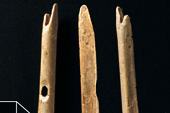 which dates back 40,000 years. It was found in Southern Germany and suggests that music was as significant to our ancestors as any other aspect of their lives. Of course, the oldest human instrument, in all likelihood, was probably the human voice.
which dates back 40,000 years. It was found in Southern Germany and suggests that music was as significant to our ancestors as any other aspect of their lives. Of course, the oldest human instrument, in all likelihood, was probably the human voice.
Humans seem to be adapted specifically for music. Music activates our pleasure centres in ways similar to drugs, food and sex. The patterns and features of music are also perceived in special ways by our brains, distinct from ordinary sounds. This explains some of what we find attractive in things like the patterns of notes in an octave, musical harmony and complex rhythm.
Today if music is about anything it is about expressing and inducing emotion.
But let us first of all take a closer look at what music is. We know that it does not have one concrete meaning. That not all people will react similarly to a specific piece of music is obvious to anyone who loves music, but explaining the reasons for these differences is considered by music therapy researchers to be so difficult that the question is usually avoided entirely.
Music certainly means something different for different people. For example, to a musician, music is their life. They eat, breathe and live music. Music is their passion. For others it is a hobby, a pastime. Music is also a means to relaxation for some and a source of great excitement to others. For example, a party would be unimaginable without music.
So we know that music is at least sound because we can hear it, but you have probably also noticed that you are able to feel the sound of music in your own body. Perhaps in the past you have stood next to a large speaker. Or maybe you have felt the rumbling of heavy bass music through a table or a floor. These effects prove that sound is some kind of physical phenomenon. Sound must somehow be hitting you, letting you feel the beat. But we don’t see, or taste or smell anything when we feel sound. There is nothing but air. It stands to reason therefore that we must somehow be feeling the air when we feel sound.
A very simple but effective experiment might shed more light on how we feel the air. Gently place your fingers on your larynx, the tube through which air passes when we breathe or talk, or sing. Now, keep your fingers gently touching your larynx and sing any note for a few seconds. If you are not the singing type, you can also hum or talk instead of singing. You may have noticed that your larynx vibrated, but if you did not, you may need to sing a little louder.
The results of our experiment on sound showed that your larynx vibrated when you made a sound. This means your larynx caused the air to vibrate. We have proved therefore that sound is just vibrating air.
We now know these three things:
1. music is sound, 2. music is vibration and 3. we experience music through some form of physicality, either externally or internally.
This brings us to the next stage of our investigation. It might be very interesting to find out what music is for. Apparently the thought of music and humans fill biologists with trepidation. Its existence and variety in human cultures and the strong evidence that the brain comes preloaded with musical circuits, suggest that music is as much a product of human evolution as, say thumbs. But that raises the question of what music is for.
Darwin speculated that human music, like birdsong, attracts mates. Or, as he put it, prelinguistic human ancestors tried to charm each other with musical notes and rhythm.
Studies in neuroscience and anthropology do suggest that indeed, music did help our human ancestors survive, particularly before language. For example, scientists suggest that language may have been built on the neural underpinnings of music.
It has now been proved that music can exist within the brain in the absence of language, a sign that the two evolved independently. Since language impairment does not wipe out musical ability, it stands to reason that musical ability must have a longer evolutionary history. And because music has grammar-like qualities, it might have served an even greater function.
With music hardwired in our brains, early humans had the neural foundation for the development of what most distinguishes us from other animals, symbolic thought and language.
But for most of us in our day-to-day lives, music has three major functions.
1. Music affects our moods and can make us feel, happy, sad, excited, calm or hopeful.
2. Music adds colour to our lives – without it, the world would be very plain.
3. And music is a creative outlet, a way we express ourselves when words are not enough.
That does not tell us, however, why music is important. But to say that music is important in our lives seems an understatement, given the fact that we spend billions on music each year.
We already know that music affect our moods. Many musicologists believe that music is a form of language or communication that directly accesses the emotions without the intermediation of words and rational thought. If that is true, and I guess we all suspect that it is, then we have to look at all the music around us and its impact on us. It’s everywhere. In our homes. On the street. In shops, restaurants and lifts. Even at the dentist. We cannot escape it.
One thing we do know is that our moods affect our bodies which in turn affect our health. But the use of music and sound to improve health is not a novel idea. Though little thought is given today as to the meaning or function of music within society, the civilizations of former times, were very conscious of the power of music. This was especially true of the pre-Christian era.
It has been easy for modern man, born and raised within a society infused with the philosophy of materialism to fall into the trap of regarding music as a non-essential and even peripheral aspect of human life. But both harmful and beneficial effects of music were recognized by the ancient Greeks, Romans, Egyptians, Chinese and Indians.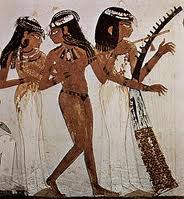
From ancient China to Egypt, from India to the golden age of Greece, we find the same, the belief that there is something immensely fundamental about music. Something which, they believed, gave it the power to sublimely evolve or to utterly degrade the individual psyche, and thereby to make or break entire civilizations.
Plato and Cicero, like the ancient Chinese and Indians, believed that music profoundly affected the behaviour of entire societies. Particularly in China, the belief was held that the state should regulate the performance of music and prohibit certain types of music because of their potentially harmful effects.
These sentiments might be extreme, but perhaps it can lead us to think about what people living in modern industrialized nations have learned through painful experience, that many of the wonders of technology have deadly side effects. For example, Nuclear power was originally promoted as being a clean and safe alternative to burning coal and oil. And the ubiquitous plastics that promised to make our lives convenient are now recognized as a major hazard to our own and our planet’s health. Could it therefore be possible that music, which many of us take for granted as just background noise, could also have unrecognized effects, both harmful and beneficial.
Let us take a brief look at what happens to us when we listen to music. We all know that our heartbeat and breathing changes with different types of music, and that our eyes’ pupils dilate. Music also affects our skin temperature. But we lose music’s true power by not letting it through our bodies, and by restricting the pleasure and healing power of music, for example by sitting still in a classical concert when our body is aching to move with the rhythm of the music. The body has become so abstracted from music that we do not do the right things with our bodies and end up having not only problems with weight for example, but also with sex, energy and body dismorphia, rife, especially among younger people.
When we wilfully restrict our body’s natural movement in response to music, we’re damaging ourselves. We know this because the effects of music on the body can be measured. For example, measurements have been taken of the sensation of music in the human brain. Music can also significantly affect blood cortisol levels. Cortisol is a stress hormone, secreted by the adrenal glands. In certain circumstances, for example, competing as an athlete, elevated cortisol levels, easily obtained by playing loud, strident music, is desirable, but it is not usually a good thing. When cortisol and adrenal levels remain high with no outlet, it could cause stress, which could lead to high blood pressure, strokes and even heart attacks.
We should perhaps ask whether certain types of agitating music, such as rock or heavy metal may therefore induce excessive cortisol over extended periods of time which would become addictive, in a similar manner to the adrenal rush one gets from drinking coffee.
A French ear specialist confirmed that the same frequencies and musical styles of Baroque or classical composition that has proved beneficial for plants were also beneficial for humans. Especially those compositions rich in stringed instruments, such as violin, viola, cello and harp.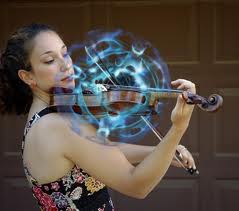
Numerous other studies from hospitals and medical schools have demonstrated the effects of music on human behaviour and physiology. For example, melodic intonation therapy, which involves speaking in a strongly musical manner, promotes recovery in stroke patients and helps those who stutter.
Mozart’s Sonata for Two Pianos, specifically, has been shown to reduce total seizure activity in epileptic. And the music was effective even for epileptics who were comatose at the time.
Spatio temporal math reasoning ability in second graders are significantly enhanced by musical keyboard training.
Music has also been shown to help reduce post surgical stress and pain, to reduce symptoms of depression in home bound elderly people, and to aid children who are developmentally delayed by enhancing hand-eye coordination.
Further research has shown that regular vocal toning of only ten minutes a day, is equivalent to taking ten milligrams of valium.
We all know about the proven effects of Baroque instrumental music on our memory and its aid in learning new languages. That is because music and language are inextricably linked through the interconnections in our brains. Therefore, musical and linguistic intelligence are highly correlated.
We also know about the Mozart effect. Yes, it even has a name. It is the theory that listening to Mozart’s music is supposed to enhance deep rest and rejuvenation, intelligence and learning, and creativity and imagination. Claims have even been made that listening to Mozart’s music for fifteen minutes, would improve our IQ by eight to nine points.
And then there is the effect of music on the unborn baby. Although sound is greatly distorted because of the liquid and tissue surrounding the foetus, there is more than sufficient musical stimulation to be heard in the womb. Some studies suggest that prenatal exposure to music, assist infant development and therefore may one day serve to improve certain developmental delays in some children.
Ultimately, attentive and sensitive listening leads us to the music inside ourselves, to the magic in music.
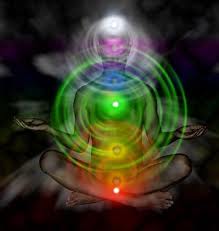 Of course we now know that not only music is composed of vibrations. Supposedly solid matter and all forms of energy, including ourselves, are also composed of vibrations. The only difference between each of these phenomena is their frequency of vibration. Each merges into the other at a certain wavelength, which obviously means, when one gets down to it, that they are one and the same thing.
Of course we now know that not only music is composed of vibrations. Supposedly solid matter and all forms of energy, including ourselves, are also composed of vibrations. The only difference between each of these phenomena is their frequency of vibration. Each merges into the other at a certain wavelength, which obviously means, when one gets down to it, that they are one and the same thing.
When this vibratory activity occurs at a frequency of around 600,000 billion waves per second, it becomes particularly interesting and accessible to us in everyday life, for this is the frequency at which our eyes have been designed to sense the vibrations and transmit them to our brains in the form of visual perception of light and colour and sound.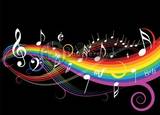
We now know that all matter is made of molecules. The molecules are made of atoms. The atoms are made of electrons, protons, and neutrons. The electrons, protons, and neutrons are made of quarks. The quarks are made of sub-quarks. And the sub-quarks are made of vibrating strings of energy. In fact, scientists have proved that everything is in a state of vibration, by demonstrating that atoms and sub-atomic particles are themselves composed of nothing else but energy in a state of vibration and oscillation. And one of the experiments’ conclusions proved that atoms are harmonic resonators, just like humans. This resonance principle effectively disintegrates the barriers between physics and music. The principle is rapidly establishing the concept that not only the atom, but all sub-atomic particles, can be theoretically considered as being nodes of resonance. In other words, some scientists are beginning to regard the atom as a kind of tiny musical note.
Scientists have also demonstrated that the structure of the atom contains ratios and numbers which resemble to a degree impossible to account for by chance, the harmonic principles of music. The intervals and harmonics of music, mirroring the geometry of the heavens, may also be present in some mysterious way not only within the physical form of man, but also within the patterns of his psychology.
Data thus far suggests that the entire universe may then be based upon vibration, that vibration may be the fundamental nature of each and every energy form currently known to science. The vibrations could be likened to playing a note on a guitar string, then hit a fret and pluck it again. You get different notes. When these incredibly tiny strings vibrate in different ways, different forms of matter appear. 
This opens up a possibility more incredible than we could have imagined. The potential of a grand unified field theory. For example let us note the interesting fact that ultrasonic sound vibrating a glass rod causes the rod to emanate both heat and light, a demonstrable example of sound energy becoming the energies of both heat and light.
And even more astonishing, sound vibration could therefore mean that the entire Universe may be nothing more than a song.
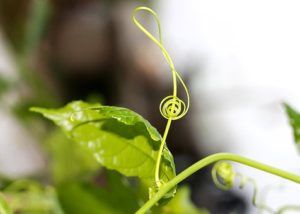
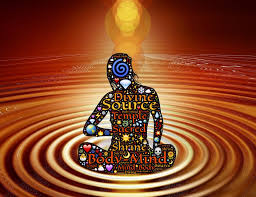
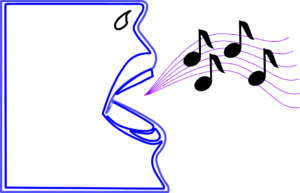


Recent Comments